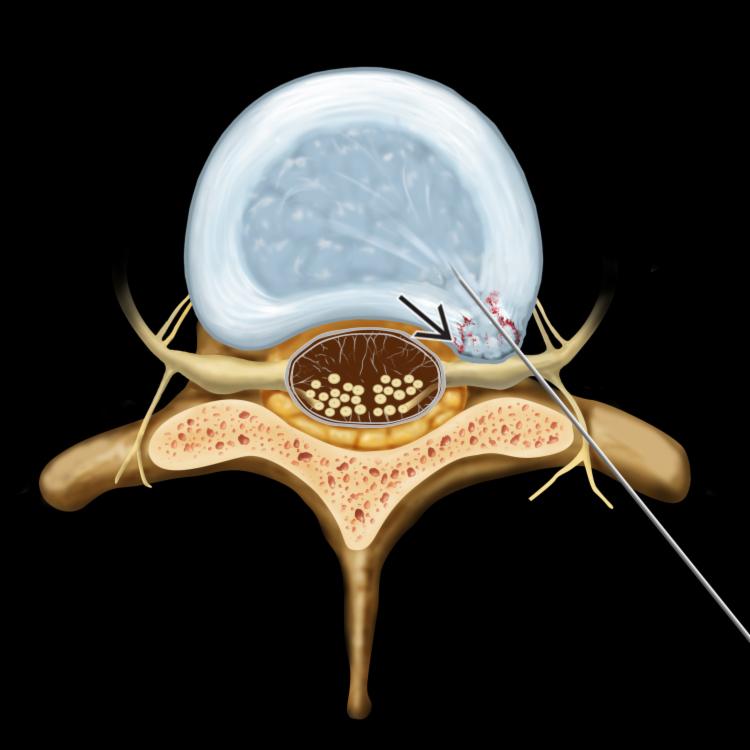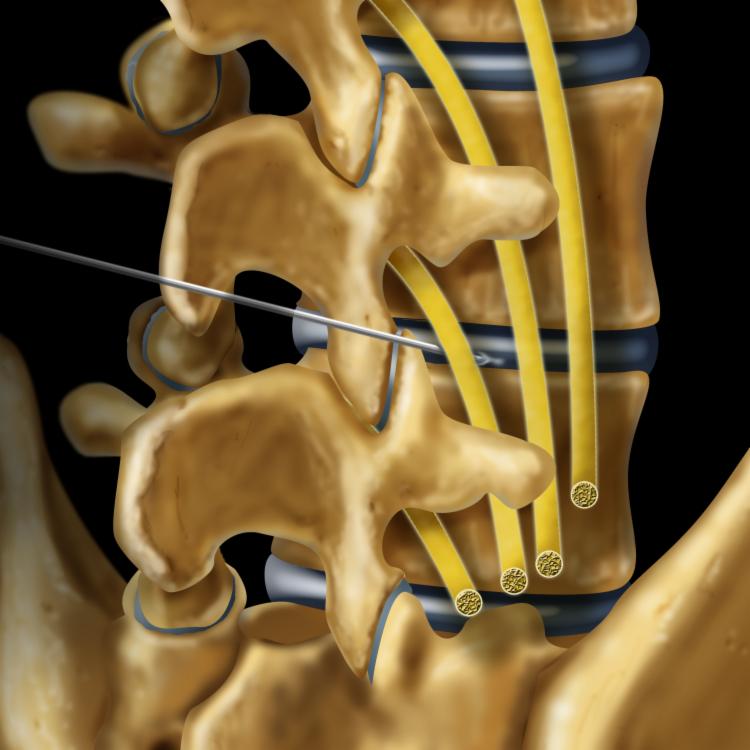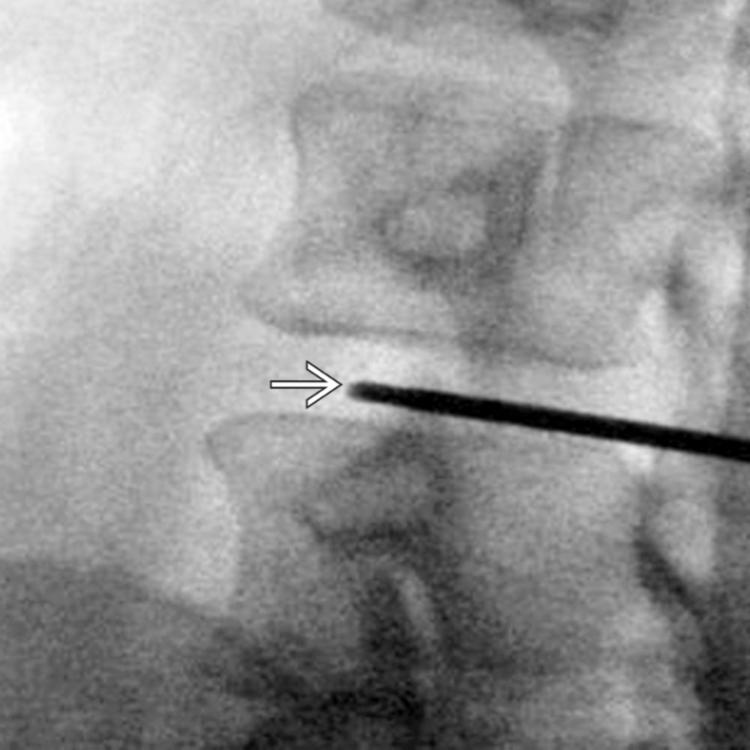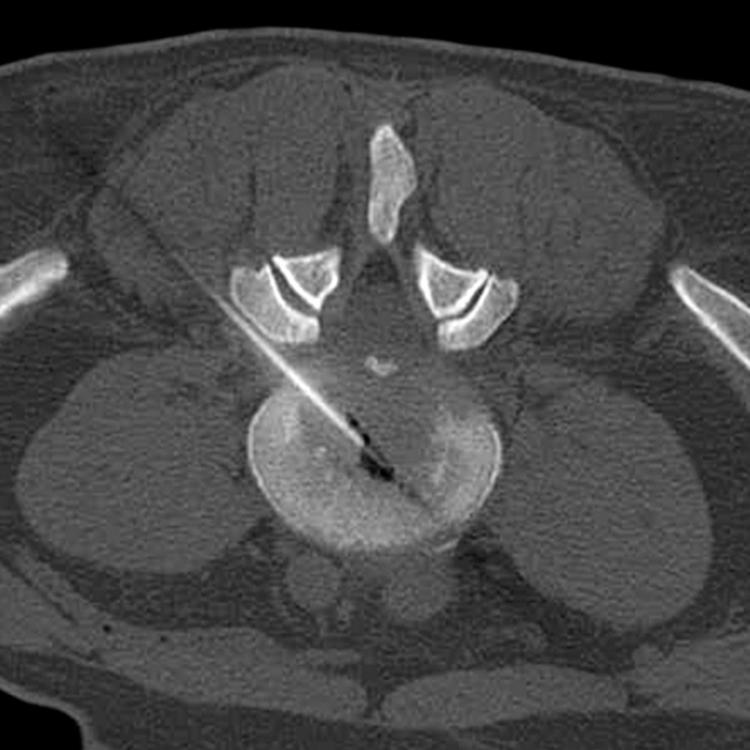Physical Address
304 North Cardinal St.
Dorchester Center, MA 02124
Percutaneous disc removal to reduce intradiscal pressure → protruded disc retracts back in place, reduced irritation on annulus nociceptive nerve receptors
Also decompresses nerve root from disc
Another proposed mechanism: Removing disc material may prevent release of chemical mediators that directly injure nerve root
Radicular pain usually greater than back pain/neck pain
Positive CT or MR scan for disc herniation
Contained herniated disc of < 6 mm
Contained herniated discs have intact outer annulus with displaced disc material held within outer annulus of contained herniated disc
Noncontained herniated disc has localized displacement of disc material beyond intervertebral disc space & breach in outer annulus
No improvement of symptoms after 6-8 weeks of conservative therapy
Before percutaneous discectomy (PD), pain relief should be confirmed after selective nerve root block has been performed
PD may provide appropriate relief in properly selected patients with contained lumbar disc prolapse
Reduced procedure time, lower costs, quick recovery, and low complication rates that can include discitis and possible nerve injury
Complications: Nerve root or blood vessel injury
Infection, bleeding, discitis




Become a Clinical Tree membership for Full access and enjoy Unlimited articles
If you are a member. Log in here